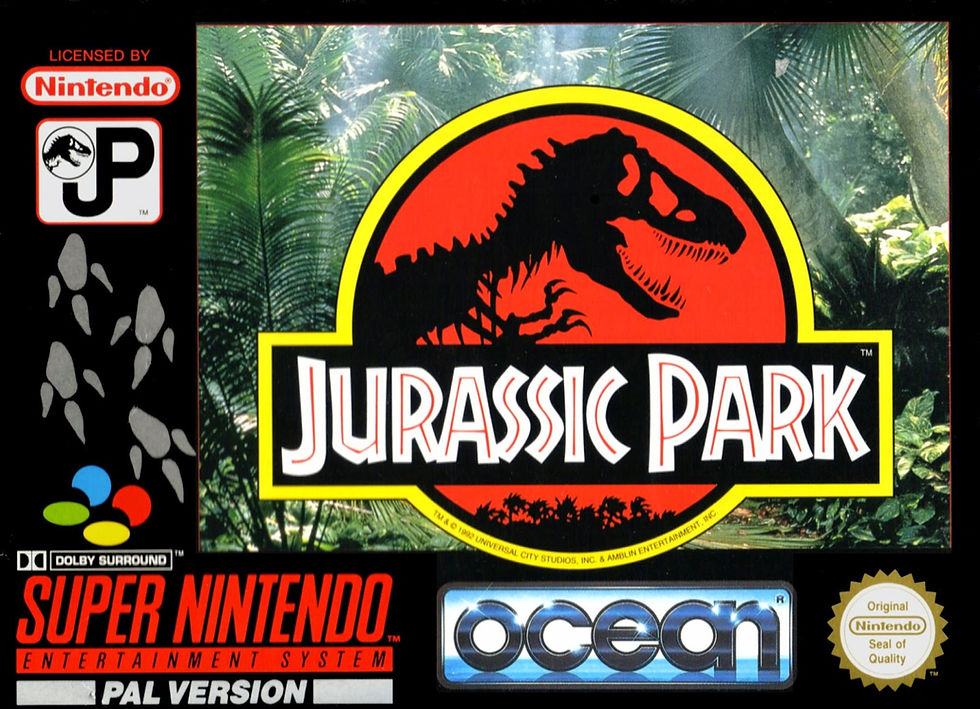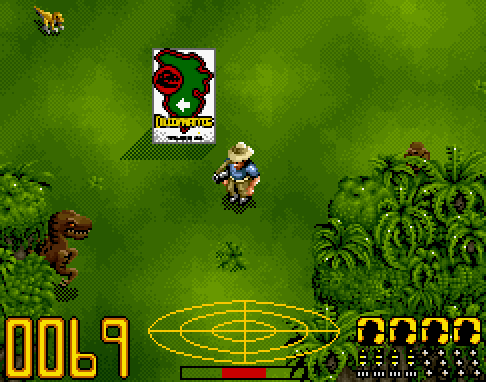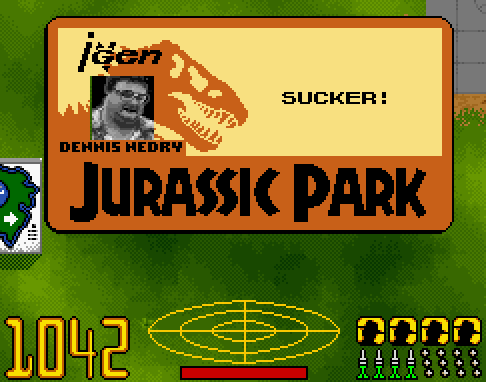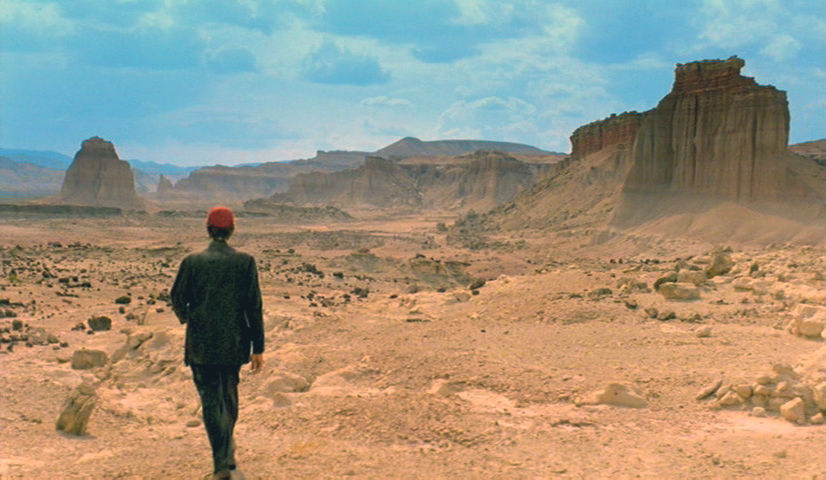White Whale #1 Jurassic Park
- decapvada
- Mar 15, 2024
- 5 min read
Remember when a video game would last months? Years?
The year 2023 marked the 30th anniversary of the original Steven Spielberg film. To celebrate, Limited Run Games released a compilation of licensed video games from the era, most notably the Super Nintendo version.

This iteration has become something of a white whale for me and I imagine also for many others my age. I was caught up in Jurassic-mania like everyone else, with the toys, play sets, mugs, lunch boxes, but the most important products were the video games. The SNES version by Ocean Software stood out from the lineup for a variety of reasons. While the NES version also had a top-down view and was not a 2D platformer like the Megadrive version, Jurassic Park SNES had open world and adventure leanings within its design philosophy alongside several first-person shooter sections.
What really made Jurassic Park SNES so memorable was its atmosphere. Indeed, the overworld graphics were colourful and detailed, the sound effects, especially the dinosaur roars, were punchy and effective, and the use of ambient noise in the audio mix added to the palette further. However, the soundtrack was what really elevated the mood of the world. Jon Dunn’s pieces mixed tribal instruments with melancholic, ambient melodies and a pinch of 90’s dance. Triceratops Trot and its use of beats and sampled flutes always reminded me a lot of the worldbeat sensation Enigma. Considering that the classic John Williams score was not present, it may seem surprising to be so complimentary about the audio, but Jurassic Park SNES has a voice of its own and is instrumental to the game’s nostalgic impact all these years later.

I was ten years old playing this, maybe eleven. Survival horror games were several years away and yet Jurassic Park managed to terrify little me in so many ways. The way the velociraptors piled out of the jungle and launched themselves at you, the thunderous charge of the tyrannosaurus rex, which was not only invincible but could kill you in one touch! The fact that its presence nearby was always signalled by an exclusive, anxiety-inducing musical theme only increased the tension.
However, while the open-world sections were very well done, it was the first-person areas that thrilled the most. These were accessed through the various buildings in the over world such as the raptor pen and visitor centre. Today, these sections are a pixilated mess of low-framerate, low-resolution slides but at the time in 1993, they were a technological marvel, and all done with just mode 7, not even the Super FX Chip! Remember also, that this is the same year that Doom was originally released! The slow speed even suited the jump scares as raptors and spitters waited for you around corners, sometimes revealed by the roars you could hear through the walls. Elsewhere, blacked-out rooms required night vision goggles otherwise entering meant instant death, the raptors squealing as they sliced you with their clawed, fatal attacks.

Something that can be said for Jurassic Park and many other games of the era is that due to the simplistic nature of the graphics, I feel that much of the immersion was left to the imagination of the player. Modern graphics are so detailed that these crafted worlds do all of the work for us. Exploring the first-person sections of the visitor centre may not seem exciting when the walls are a repeated texture or image but stumbling across the kitchen at the age of 10 was thrilling after seeing the movie. That we were forced to fill in the gaps in detail by using our imaginations led to these worlds, at least in memory, appearing far richer and more detailed than they were. Perhaps it even leads to a greater sense of attachment.
I never finished the game and most likely, neither did most kids. Imagine such a sprawling video game without a save system or even passwords. To complicate things further, like many licences at the time, Jurassic Park was incredibly difficult due to the obtuse locations of many of the key items and the random directions the in-game narrative directed the player. Rather than systematically exploring each section of the park, Grant is forced to go from place to place in a chaotic, knit-patterned order. As a fan of Metroid, I was no stranger to backtracking but here, it feels like padding for the sake of value. I guess we were expected to draw our own maps or buy the latest issue of Console XS (I did!) for the complete walkthrough. Playing without a guide is not advised.

Still, despite its flawed design, Jurassic Park is a fascinating, well-executed licence, and easily the best of the bunch made for the original film. I’d even dare to say it may be one of the best-licenced titles of the 16-bit era, as in a landscape of platform games and scrolling beat 'em’ ups, Jurassic Park SNES stands out. With superb presentation and a mixture of genres, it is at least trying to be something special while adhering to the source material more effectively than the other versions. If the point of a movie license was to give the player a piece of the world outside of the original medium, Jurassic Park SNES succeeds beyond expectations. Much of the art from the movie is replicated. Dino-facts are given to the player by Mr. DNA. Missions are reported to Grant via pictures of the cast and text, even Dennis Nedry, the closest thing the film has to an antagonist, gives the player wrong information. Brilliant.
So, thirty years later, aided with save states, rewind functions, an in-game map, and a guide to follow, I finally completed it. The ending, as was known thanks to the magazines of the era, was just a screen of text. After so much time it didn’t matter anymore, and frankly, it’s supposed to be the journey, right? It was a long journey, that’s for sure. In those days a video game would last months, years. Without rewind or save-anywhere features, video games were harder. We also only got so much pocket money at that age and Christmas and birthdays came but once a year. Video games were long-term commitments. Well, many are still today but for different reasons.

Referring back to immersion and filling in archaic graphics with our imagination, I think the amount of time we would spend on a video game in those days amplified our emotional attachment and immersion. We lived within these games in our youth but then I guess we had nothing better to do either. In the end and after so many years, Jurassic Park SNES took around five hours to complete. Five hours work. Nowadays, we expect to complete our video games and then move on to the next one, like books, movies, and albums. How times have changed?




Comments